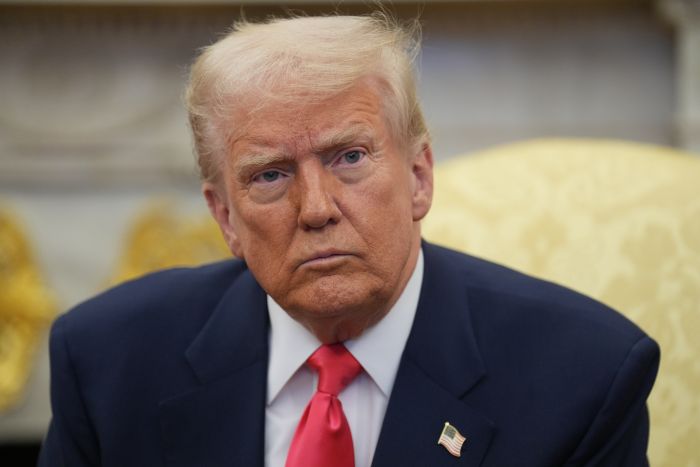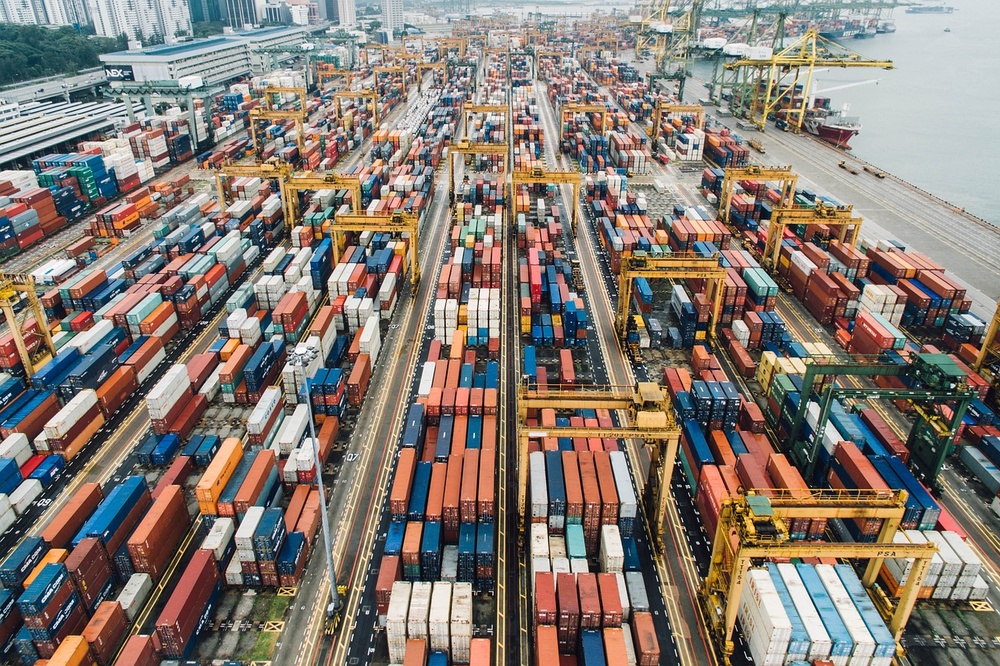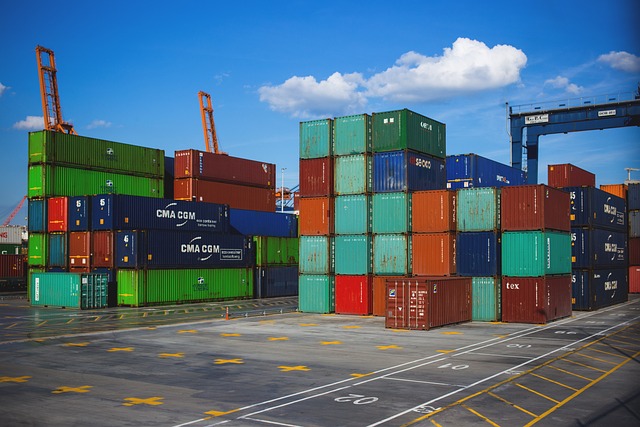- #China-US Competition

- ● The United States and China have agreed to a temporary 90-day pause in their escalating trade war, offering a narrow window to resolve trade tensions, though underlying policy disagreements and strategic competition remain unresolved.
- ● Efforts to reach a lasting agreement are complicated by unclear U.S. trade objectives, enforcement issues from previous deals, recent legal setbacks for the Trump administration, and China’s push for greater self-reliance in manufacturing.
- ● While both countries have short-term incentives to reach a deal, any agreement is likely to be unstable and partial, as it won’t fundamentally address structural issues like Chinese industrial policy or U.S. export controls.
For the moment, the United States and China have stepped back from the brink in their trade war. With the agreement on a 90 day pause in Geneva, the two sides now have an opportunity to narrow their differences on trade policy. However, US policy volatility and two recent court decisions have added additional uncertainty to reaching an agreement that would provide long-term stability in the economic relationship.
Prior to the truce, the United States and China were on what
US Treasury Secretary Scott Bessent described as an unsustainable
path. Both sides had engaged in escalatory tariff increases that quickly
saw freight bookings from China to Southern California ports decline by 44
percent in a matter of weeks. With US tariffs at 145 percent on goods from
China and US goods facing a 125 percent tariff in China, the two sides risked a
full economic decoupling. Something both sides sought
to avoid in Geneva.
The difficulty for resolving the trade war is the lack of a
clear objective, something that is true more broadly with the Trump
administration’s approach to trade with both allies and adversaries. Trump and
administration officials have sent conflicting signals about whether the
tariffs are for
negotiations to lower the trade deficit and remove barriers to US goods in
foreign markets, reshore
manufacturing, or generate
revenue to reduce taxes. Seemingly, the Trump administration wants to
achieve degrees of all of these objectives. What does seem clear is the desire
of the administration to establish a new universal 10
percent tariff that was included as the baseline in the reciprocal tariffs.
The dispute with China is complicated. The United States
trade deficit with China was $295.4
billion in 2024, larger than the US trade deficits with the EU ($235.6
billion) or Mexico ($171.8 billion),
and it is complicated by strategic competition between the two countries. From
an economic perspective, US concerns extend beyond the trade deficit itself and
can be placed into three categories: Chinese policies related to forced
technological transfer as outlined in the first Trump administration’s Section
301 investigation; policies that encourage manufacturing and
overcapacity as opposed to domestic consumption; and US export
controls related to national security.
Reaching a lasting agreement with China that would reduce
the US trade deficit or incentivize reshoring will be difficult. In the first
Trump administration, the United States and China reached a Phase One agreement to address the
intellectual property issues identified in the Section 301 case and rebalance
the trade relationship. The four-year
review of the agreement found that China had not followed through on its
pledge to make changes to its intellectual property policies and a separate
analysis by the Peterson Institute of the purchase agreement to address the
trade deficit found that China had not
followed through on its commitment to purchase an additional $200 billion
in US goods.
The current talks are also facing difficulties. Less than
three weeks after the talks in Geneva, President Trump is already suggesting
that China is not
living up to its end of the agreement and Secretary Bessent as described
the talks as “stalled.”
The current difficulties are likely a result of China slow walking the removal
of countermeasures it placed on the United States related to rare earth
minerals and the US decision to pause exports of airplane
parts and stop exports of chip
design software to China.
However, two recent court
decisions have ruled that the Trump administration’s use of the
International Emergency Economic Powers Act to reset tariff rates was
illegal. While the administration is appealing and has received a temporary
pause in the verdict of the first case, these decisions at least
temporarily weaken the Trump administration’s hand. Though, it can utilize
other trade measures, such as the Section 301 procedure, to achieve similar
aims, for the moment it is in a weakened negotiating position.
China also appears reluctant to cut a deal. Shortly after
the US and China reached a 90 day pause, Chinese President Xi Jinping seemingly
doubled down on the policies that have created the friction between the
United States and China to begin with. While visiting a Mao era factory, Xi
remarked that “From relying on imports of foreign matches, soap, and iron in
the past, we have now become the world’s largest manufacturing country,” adding
“We need to keep improving our manufacturing sector, insist on self-reliance
and self-improvement [and] master key core technologies.”
Separately, Chinese firms have pushed further to replace
US and other foreign parts from their supply chain. While replacing US
parts in the supply chain is a rational business reaction to shifts in US
policy towards restricting access to US technology and the second US-China
trade war, even a deal between the US and China is unlikely to completely
reverse the trend due to the Chinese government’s desire for self-reliance and
the Trump administration’s capricious approach to trade policy. In the long
run, the shift from US parts in China’s supply chain will likely add to the
tensions as US manufacturing exports to China decline.
The shift away from US and foreign parts has implications
beyond US-China trade. Concerns that China’s industrial policies discriminate
against foreign firms and that China has not done enough to spur domestic
consumption to deal with its overcapacity issues are not
limited to the United States. Without domestic reforms in China to consume
more and to allow foreign goods to compete on an equal footing, governments
beyond the United States will need to take steps to adjust their supply chains
as they are squeezed by US export controls and Chinese shifts towards domestic
production. They will also need to put in place tariffs to prevent Chinese
overcapacity from undermining domestic industries, something we are already
seeing take place in response to overcapacity
in China’s EV sector.
Despite these challenges, we should expect the United States
and China to move towards a deal. Each side has incentives to reach a more
comprehensive truce, even if it may be unstable in the longer term. The United
States needs continued access to rare earth minerals, especially, rare earth
magnets, as it develops alternative supply chains, while China was already
seeing damage to its manufacturing sector from the tariffs.
The recent trade deal with the United Kingdom provides some insight into the type of deal the Trump administration may be seeking. Any agreement will maintain the 10 percent baseline tariff and include tariff rate quotas in key areas. The tariff rate quota will likely apply to areas where the administration wants to ensure increased US manufacturing, such as semiconductors and pharmaceuticals, but still needs imports from China. In areas such as automobiles, where China is not currently a player in the US market, we should expect the Trump administration to try to maintain barriers to Chinese entry. Any agreement will likely contain some understating on rare earth minerals, and we should expect China to seek reductions in US export controls on semiconductors.
The agreement will also likely include steps to reduce the US trade deficit with China, but this will need to be bound in a more realistic set of purchasing goals than the Phase One agreement. Reducing the deficit is also one reason why baseline tariffs will likely remain in place.
Since any agreement is unlikely to significantly adjust
domestic Chinese policies underlining the current US-China trade war or
continued US use of export controls on critical technologies, any agreement
will be an unstable truce. The Trump administration’s willingness to threaten
higher tariffs when it is unhappy with progress will also add an element of
instability to any agreement, but in the short run avoiding a sudden decoupling
is in both countries’ interest.
Troy Stangarone was previously the Senior Director at the Korea Economic Institute of America and is currently a columnist for The Korea Times and The Hankook Ilbo, as well as a contributing author for The Diplomat. He is co-chair of the Steering Committee for the North Korea Economic Forum at the George Washington Institute for Korean Studies and a member of the Korea-America Student Conference’s National Advisory Committee. During his time at KEI, he was a 2012-2013 Council on Foreign Relations International Affairs Fellow in South Korea, sponsored by the Asan Institute for Policy Studies, and a Posco Visiting Fellow at the East-West Center. Mr. Stangarone also previously worked on Capitol Hill for Senator Robert Torricelli on issues relating to foreign affairs and trade. Mr. Stangarone holds an MSc. in International Relations from the London School of Economics and Political Science and a B.A. in Political Science and Economics from the University of Memphis.

